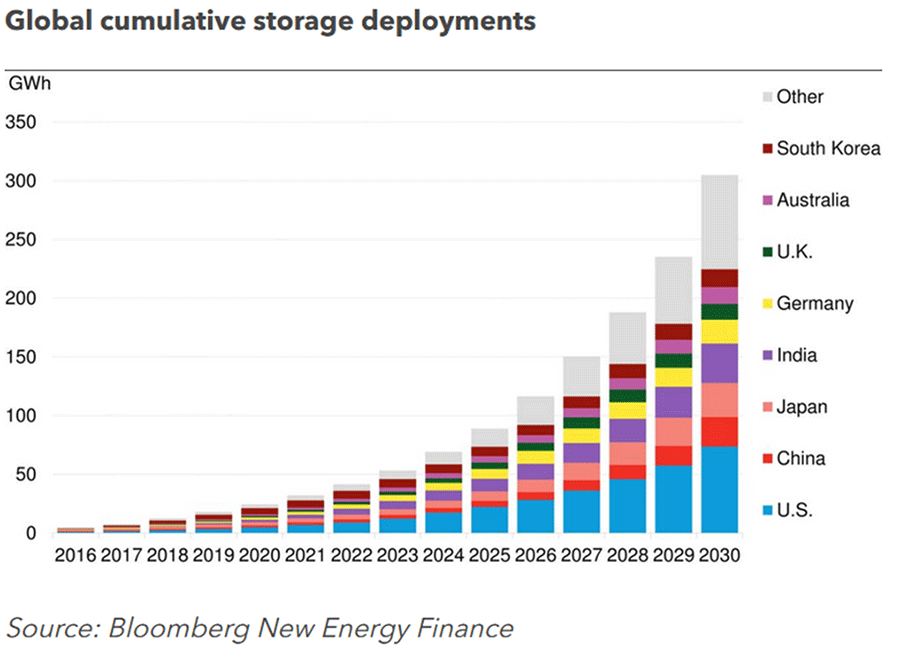The global energy-storage market is growing very rapidly and will continue to do so.
BloombergNEF forecasts around 350 GW of storage installed by 2030, while Wood Mackenzie forecasts nearly one terawatt-hour by the same year.
Both expect continued exponential growth beyond 2030. Wood Mackenzie forecasts 706 GWh of ‘front of the meter’ (grid side) storage installed by 2030. Storage for small applications will almost certainly remain a battery application.
Renewables backup is the major driver of the growth of storage and provides us with another metric for the market potential of the PTES system.
The IEA estimates that 95 % of the increase of global energy capacity over the next five years will be from renewable sources – more than half of this as solar photo-voltaic (PV) – reaching a total installed renewables capacity of 4.8 TW in 2026.

